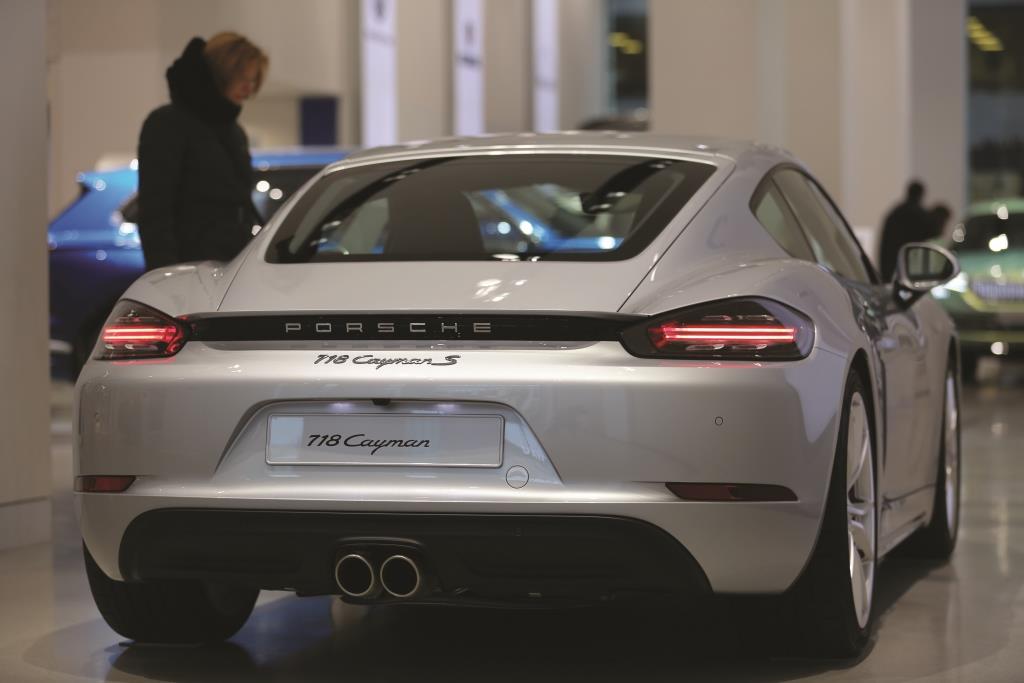Just in case you haven’t noticed – the personality of the top-end sports car has changed drastically in a few short years. Size does count… and the smaller the better.
Well that’s what the manufacturers tell us as virtually every new model emerges with decreased engine size but, miraculously, better top speed, acceleration, fuel consumption and emission figures.
And the clue is in those last two words. Environmental regulations have shepherded us into a sterile new world where normal aspiration is no longer the norm and turbocharging is de rigueur.
If you are suffering from displacement envy, you could still go for a Ferrari F12 TDF 6.3-liter V12 or even a Dodge Viper 8.4-liter V10. But, I fear, they are a dying breed.
And how can you logically argue in favor of cubic centimeters when one of the fastest production cars on the planet is the Tesla Model S P100D – an all-electric family four-door sedan!
Loading...
The new Porsche 718 Cayman, and it’s virtually identical topless twin, the 718 Boxter, follow the genes of the new generation and are now turbo fours rather than flat sixes and are trimmed down to a mere two liters.
In a weird way it echoes the ethos of the man who founded the company back in 1931.
“In the beginning, I looked around and could not find the car I’d been dreaming of: a small, lightweight sports car that uses energy efficiently. So I decided to build it myself,” said the late Ferdinand Porsche.
But don’t confuse economy with performance – the new 718 will whisk you to 100km/h in under five seconds and the S (with a 2.5-liter engine) shaves off another half second.
Turbo lag is fast becoming a part of ancient history and, thanks to a crafty fellow called Dynamic Boost, the new models are practically as spontaneous as their predecessors.
The Helshoogte Pass in the Western Cape linking the winelands of Stellenbosch and Franschhoek provided a fine test of the retuned chassis for dynamic cornering and the more direct steering.

What you may miss are the gutsy aural tones of old and the subliminal thrust of the bigger engine. But get over it; you are helping to save the planet in a vehicle that is technically superior in every way.
So now that performance across the spectrum is merging closer and you can no longer brag about your brutish motor, we can get to the real selling point – looks.
And that can be dangerous ground. How do you compare a Ferrari 488 with a Lamborghini Huracán, a McLaren 570S with a BMW i8?
The difference I see with Porsche design is that they retain a more understated, almost sculptured design throughout the range. And that includes the more “modestly” priced 718 Cayman.
Porsche assert that the 718 embodies the shapes and proportions of legendary mid-engined racing cars like the 550 Coupé , the 718 GTR Coupé and the 904 Carrera GTS, which is all rather romantic.
Yet the new Cayman certainly catches the eye with a front end that is wider and more muscular in appearance, the narrow front indicator lights winking above the enlarged air intakes, and completed by the newly designed bi-xenon headlights with integrated LED daytime running lights.
And the derrière, which really seemed to be unfinished before, gets a major makeover through an accent strip in shiny black with the Porsche badge emblazoned on it and very fancy see-through tail lights.
The interior is everything you would expect from Porsche with all the controls (apart from the hard-to-find hazard button) at your fingertips amidst a tasteful, if safe, blend of leather and metal.
Although the familiar environment has been upgraded with new elements, the instrument cluster could have been blessed with a stronger dose of new age technology. Like the Audi TTS Coupé which has emerged with what is claimed to be the technological benchmark and is certainly impressive.
The virtual instrument cluster is in the form of a high resolution LCD screen that switches between a classic view with round instruments, to a futuristic full-screen view at a touch on the multifunction steering wheel.
It seems that some marques have remained conservative when it comes to forsaking the classic dials and embracing modern virtual displays.
Hopefully Porsche will lead the way in developing the future sports car with their Strategy 2025. The aim is to blend the history and values of the brand with innovative technologies. And they state clearly that digitalization, connectivity and, of course, electromobility will play a major role.
Let’s not forget that Porsche is one of the most profitable car manufacturers per unit in the world and makes more money for Volkswagen than the VW brand itself. Although VW sell about 25 times more cars!
In 2015, Porsche deliveries were up 19% up on the previous year with revenue rising by 25% to $3.6 billion. And in a tough year for global automakers, Porsche managed to keep the Zuffenhausen flag flying high in 2016.
Driven by Ferry Porsche’s dream of the perfect sports car, the company follows a plan called the Porsche Principle – basically to get the most out of everything.
“From day one, we have strived to translate performance into speed – and success – in the most intelligent way possible. It’s no longer all about horsepower, but more ideas per horsepower. This principle originates on the racetrack and is embodied in every single one of our cars.”
So reads the website blurb. And it is the way you feel behind the wheel of every Porsche.
Loading...
